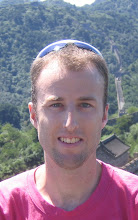We visited the Nanjing Massacre Museum and Memorial. It was renovated a couple years ago. The events in Asia before and during World War II, outside of the United States and Japanese conflict, were relatively unknown to me. The history of the Japanese occupation of China was well documented. A timeline with pictures and newspaper articles traced the Japanese army as they moved west, through many places now familiar to me, including Taicang and Changzhou (which fell on November 29th).
On December 13th, 1937, the Japanese army reached Nanjing, which at the time was the base of the Kuomintang and the capital of the Republic of China. The museum houses artifacts and bones of the victims, news reports and diaries, including some by western teachers and professionals, and photographs, many of which were taken by the Japanese army. A lot of anger and resentment still linger over the massacre, and some of those emotions show up in the descriptions in the exhibits.
On National Day, October 1st, we climbed part of Purple Mountain, which is a big hill in an enormous park next to the city. We also visited Sun Yatsen’s mausoleum. He’s regarded as the father of modern China, so it was only appropriate to visit him on China’s national holiday, except for the dense crowds that day.
The rest of the week has been pretty slow. I have a cold and it’s rainy so I have done a whole other than study and read. A number of people stayed home because traveling at this time is not ideal (everyone has the same week off).



1 comment:
How interesting!!
Impressive that the Chinese are now able to publicize their resentment against all the goings-on dating back to WWII.
I hope you get over your cold soon, Sam
Love, Mom
Post a Comment